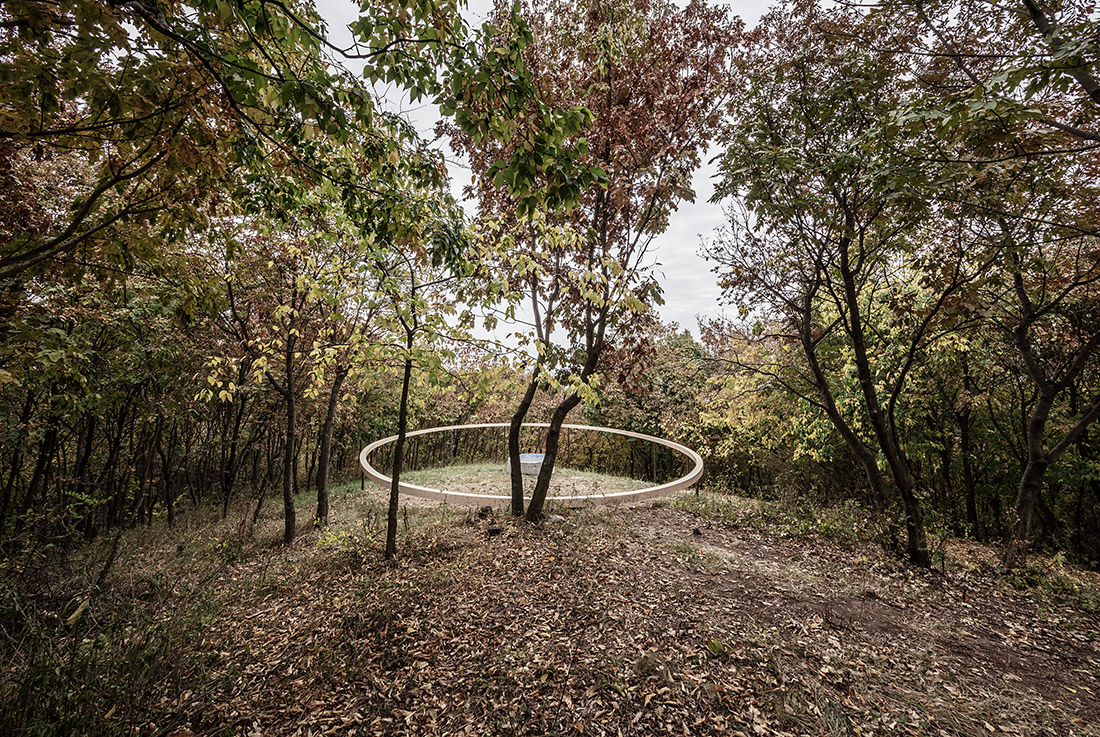
This non-denominational chapel is one of the tangible results of a university course in Art Theory at the Moholy-Nagy University of Art and Design. The course addressed contemporary sacred art and design, and students were asked to reflect with a free choice of medium. The Forest Chapel in Pannonhalma is one of the reflections. Its design, planning, pre-production and construction were all carried out by altogether forty participants, mostly students, within the limited timeframe of seven days. The Forest Chapel was entirely hand made: a large oval shape, open to the sky, and gently fitting into the environment of the forest, made out of seven layers of hand-bent, glued and screw-fixed planks, standing on twelve hardly visible rusty steel supports — floating above the ground, under the foliage level. In the space enclosed by the structure, a blue- golden mosaic covered concrete altar of gratitude collects rainwater, serves as a pond for birds and animals — or whatever its users wish.
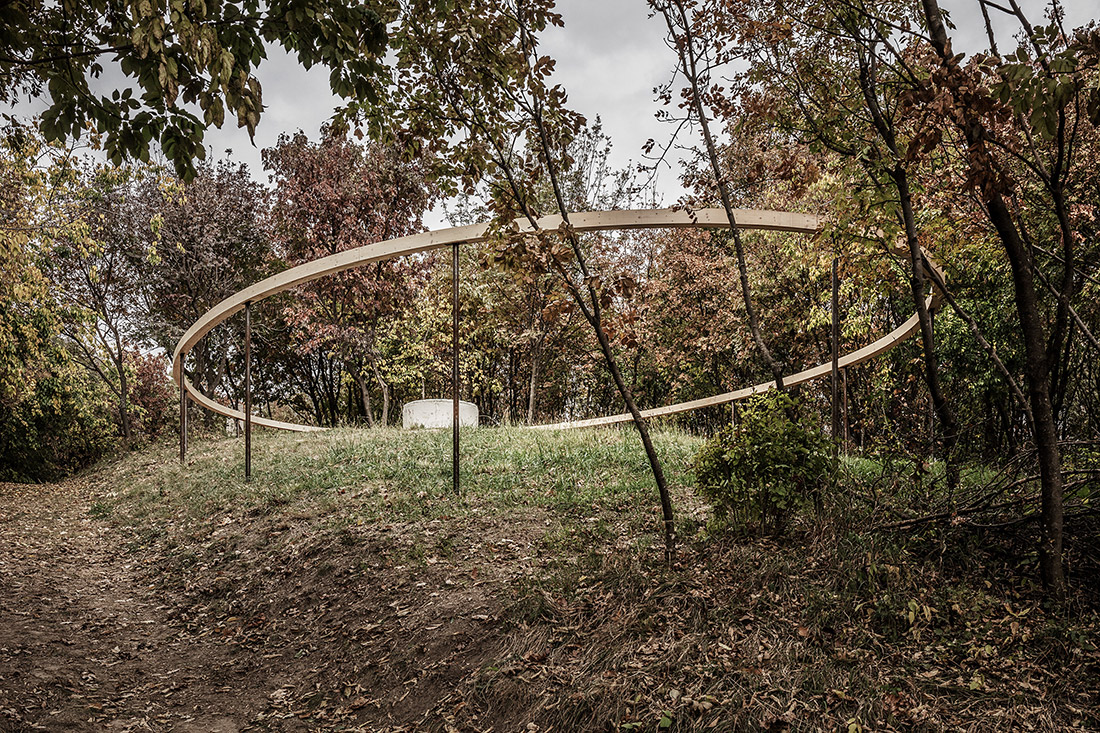
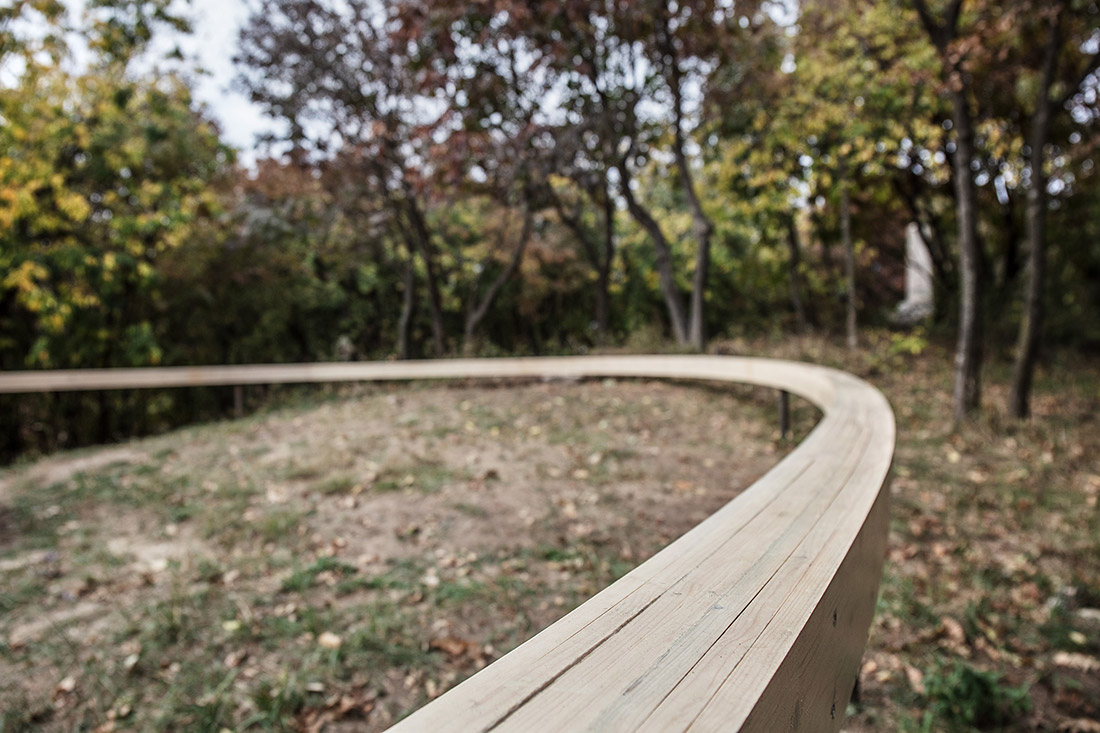
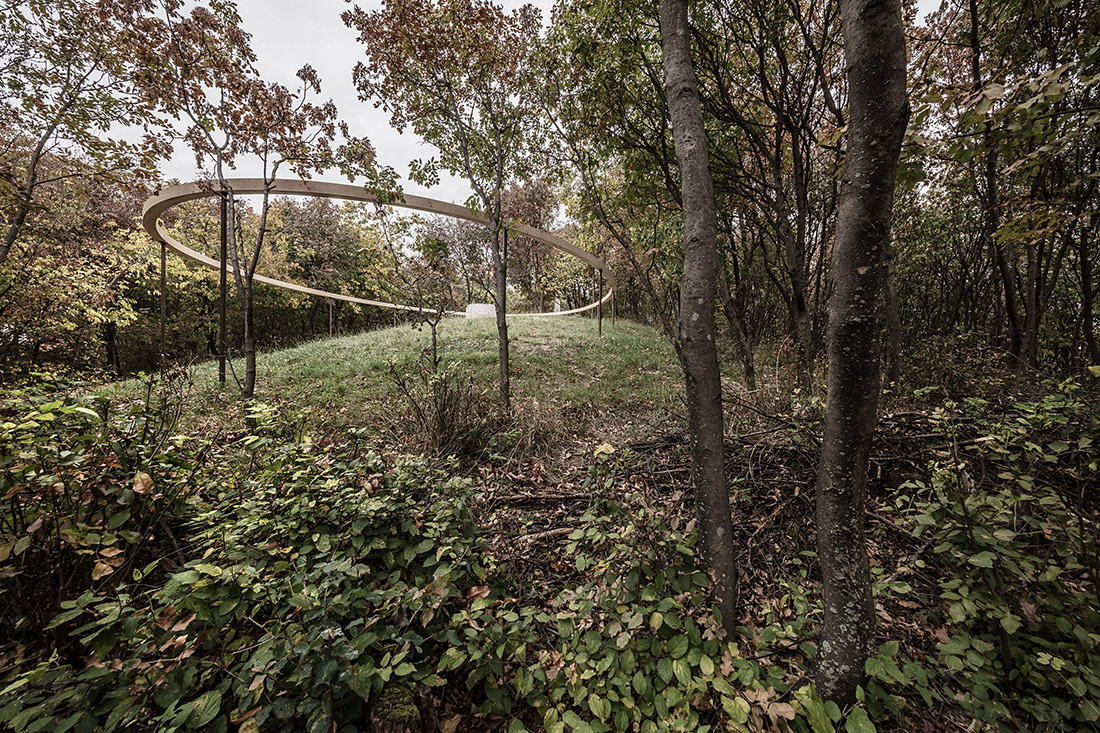
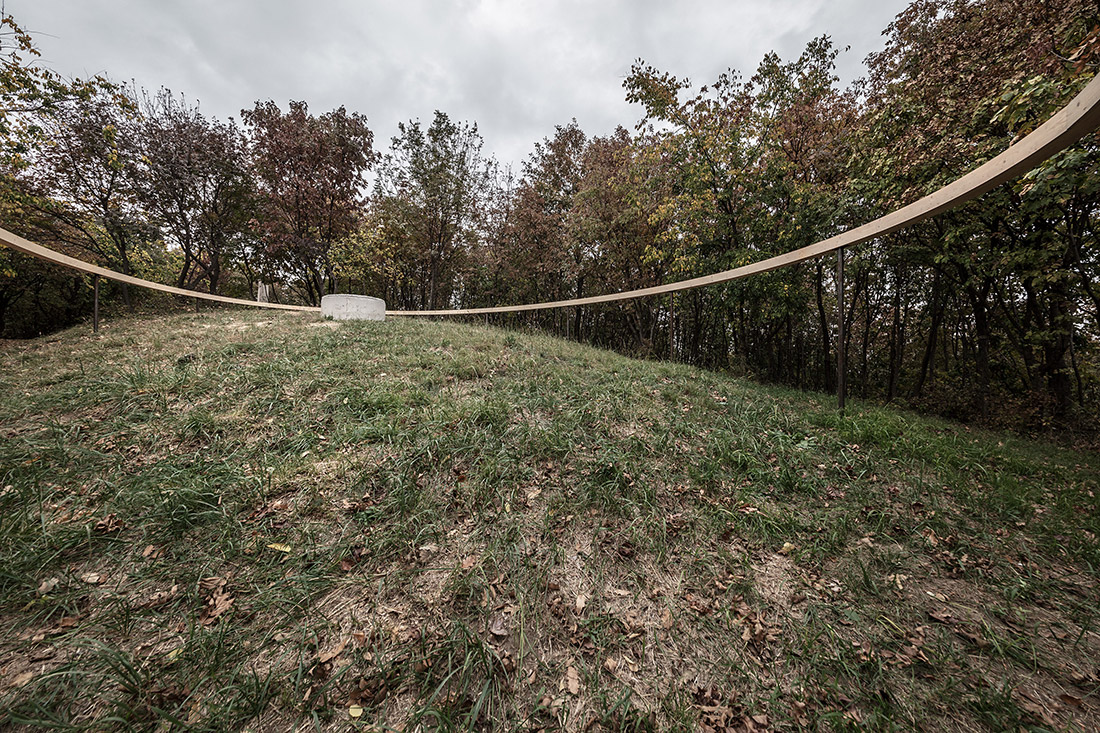
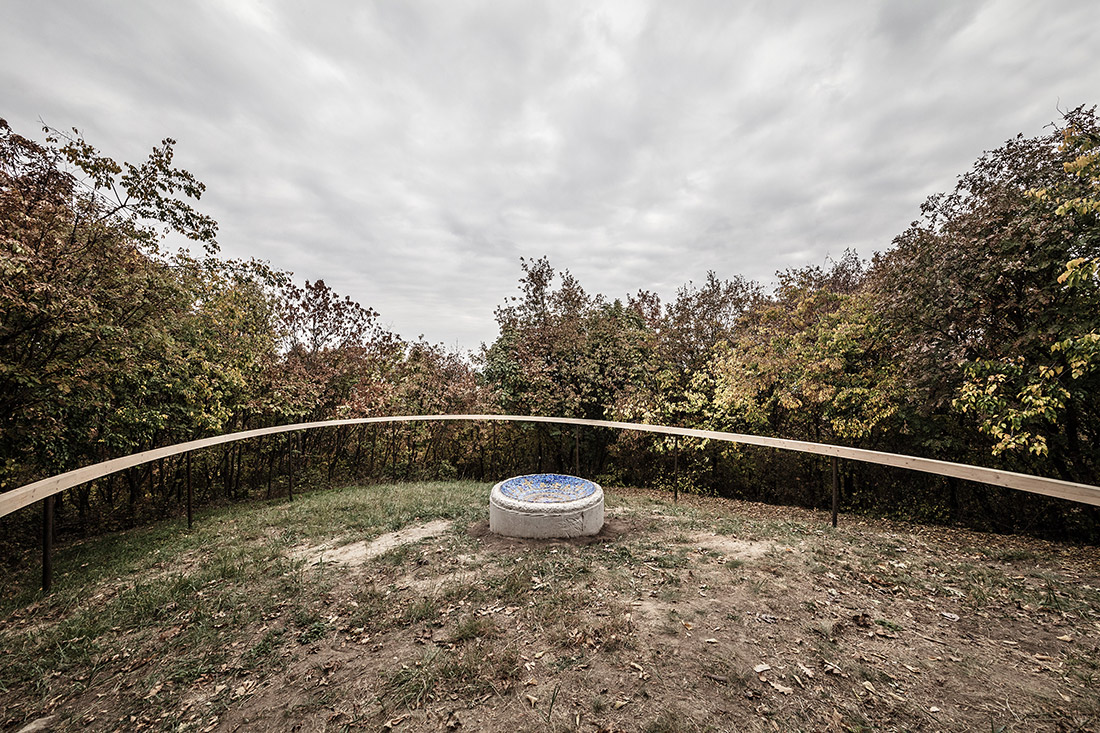

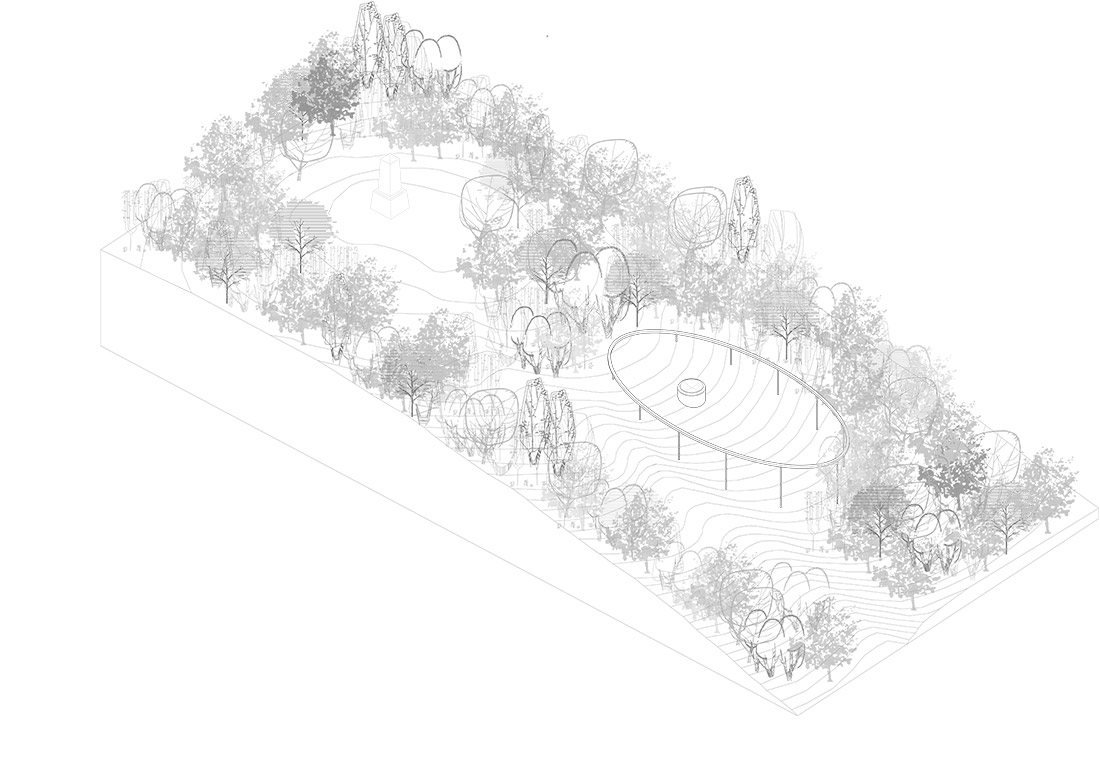
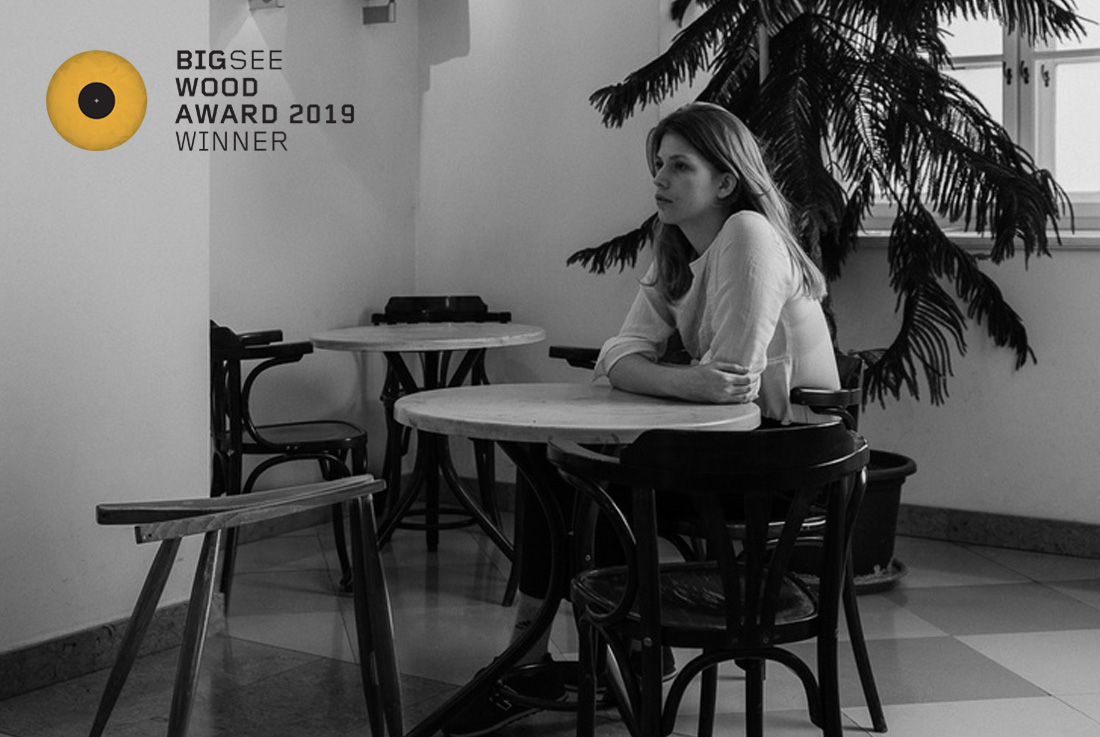
About author
Proud of their tradition, intellectual background, and students, Moholy-Nagy University of Art and Design (MOME) in Budapest is facing the future with a brand new Campus, a complex scope of studies, as well as a redesigned curriculum. Education at MOME comprises the fields of Architecture, Design, Media, and Theory. The three-cycle educational structure – BA, MA, and PhD/DLA – provides adequate flexibility and mobility for studies. The Forest Chapel in Pannonhalma was initiated as a reflection to a course in Art Theory by 2 BA students of Architecture, and was developed by a team, with 3 more BA students of Architecture and 1 MA Student of Graphic Art. The construction material came as a prize for winning the 2017 HelloWood competition, the plot was awarded by the City of Pannonhalma, and the event was welcome by the Pannonhalma Campus summer camp. The Forest Chapel was built by a community of forty, mostly students of different disciplines. The project has been ongoing with frequent visits to the Chapel, as well as lectures, exhibitions and theses, and has created a close community.
Architects: Kázmér Domokos; Eszter Kaderják; Dorottya Kéry; Anna Pongrácz; Noémi Éva Sebestyén – BA Students of Architecture at the Moholy-Nagy University of Art and Design (MOME), Budapest, Hungary
Year of completion: 2018
Location: Saint Imre Hill, Pannonhalma, Hungary
Text provided by the authors of the project.


